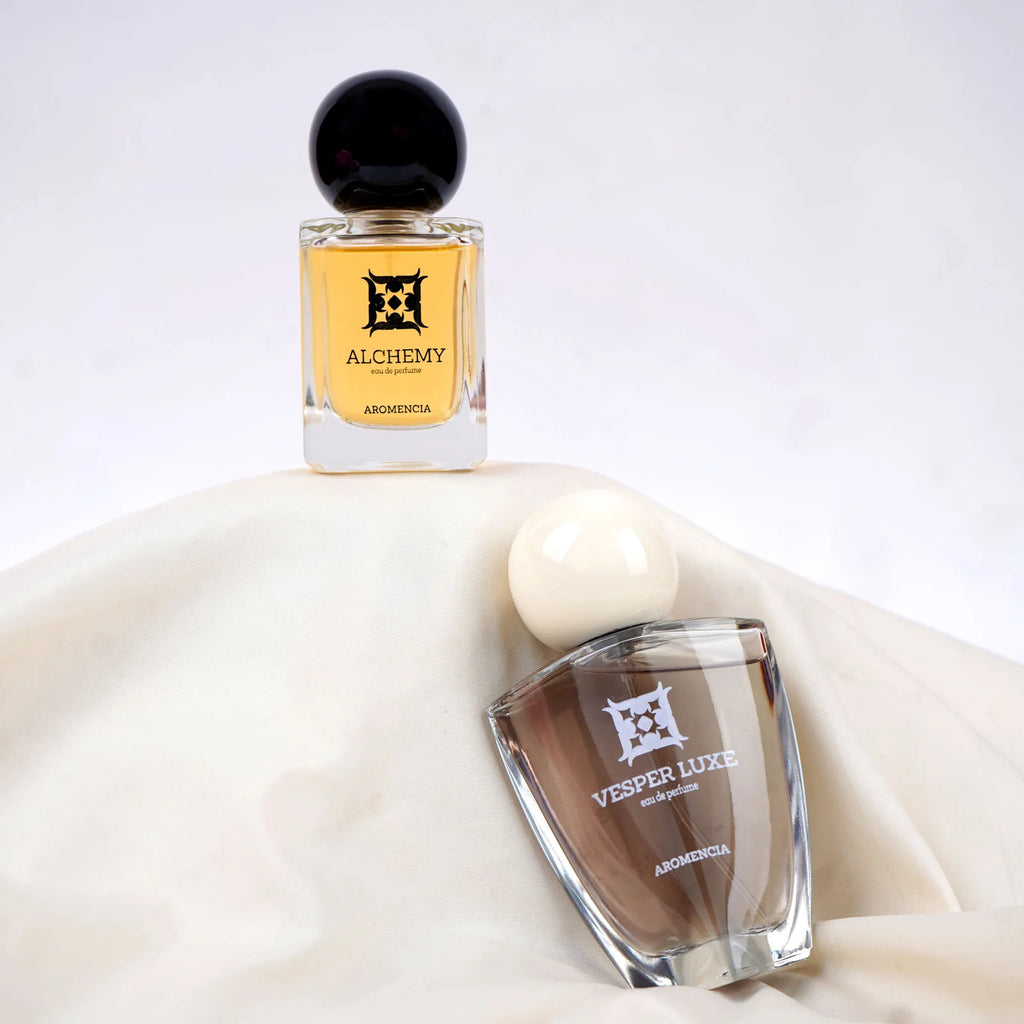Top 10 Eau De Parfum Myths Busted: What You Really Need to Know

In this blog, we’re debunking the top 10 Eau de Parfum myths that might be affecting how you shop for and wear fragrance. Read on to find out what’s true and what’s just perfume folklore!
The Truth: While Eau de Parfum (EDP) and Eau deToilette (EDT) both belong to the same family of fragrances, they are not simply a \"stronger\" version of each other. The key difference lies in the concentration of perfume oils. EDPs typically contain around 15-20%perfume oils, whereas EDTs usually have only 5-15%. This difference affects not only the strength of the scent but also its longevity and sillage (the trail of scent you leave behind). EDPs tend to last longer and have a richer, more complex scent profile compared to EDTs.
Myth 2: Expensive Perfumes Are Always Better Than CheaperOnes
The Truth: Price doesn’t always equate to quality.While some high-end perfumes may use more complex or rare ingredients, there are also plenty of affordable fragrances that are beautifully crafted and last just as long. The key to a great perfume is its composition, quality of ingredients, and how it resonates with your body chemistry—not just the price tag. Brands like Zara, The Body Shop, and Replica by Maison Margiela offer fantastic EDPs at more accessible price points.
Myth 3: You Should Apply Perfume to Your Clothes, NotYour Skin
The Truth: It’s true that applying fragrance to your clothes may allow you to enjoy the scent for a longer period of time because fabric holds scent longer than skin. However, applying perfume to your skin is the best way to allow the fragrance to blend with your natural body chemistry. Your skin\'s unique oils interact with the perfume oils, creating a more personalized and nuanced scent. Also, applying fragrance directly to your skin ensures that the scent projects and lasts in the way it was intended.
Myth 4: Perfume Should Only Be Applied to Pulse Points
The Truth: While pulse points—such as the wrists, neck, and behind the ears—are commonly recommended for applying fragrance, they aren’t the only areas to consider. Applying perfume to your hair or clothing(in moderation) can enhance the longevity and diffusion of the scent. Just be careful with delicate fabrics like silk, as they can stain. For those with dryskin, you may want to apply fragrance to moisturized skin to help it last longer.
Myth 5: You Can’t Wear Perfume in the Summer
The Truth: While some perfumes are better suited for colder months, there’s no reason you can’t wear fragrance in the summer. The key is to opt for lighter, fresher scents with citrus, floral, or green notes. Eau de Parfum is also not inherently too heavy for warm weather—it's all about choosing the right type of fragrance for the season. For instance, a floral fragrance like Chloé Eau de Parfum or a citrus-based scent like JoMalone Lime Basil & Mandarin are perfect for hot weather.
Myth 6: Perfumes Don’t Change Over Time
The Truth: Over time, perfume can change in scent due to factors like oxidation, exposure to light, and changes in temperature. This is especially true for older bottles. Perfumes with more natural ingredients (like citrus or floral notes) may lose their vibrancy faster, while heavier fragrances (like oriental or woody scents) tend to holdup better. It’s important to store your perfume properly—away from sunlight, heat, and humidity—to ensure it lasts as long as possible.
Myth 7: All Eau de Parfums Are the Same
The Truth: Not all Eau de Parfums are created equal! Fragrance notes, concentration, and brand philosophy can vary significantly between different EDPs. While they may share the same classification (Eau de Parfum), their compositions, intensity, and overall feel can differ greatly. For example, one EDP may be more floral and airy, while another may be warm, spicy, or woody. The beauty of fragrance is that it offers something for everyone, and there are no universal rules about whatmakes a \"good\" fragrance.
Myth 8: Perfumes Can Be Used as a Mood Booster, but Onlyin the Morning
The Truth: Fragrances can boost your mood at anytime of day. While it’s true that some people reach for fresh or uplifting scents in the morning to feel energized, fragrances can be a great mood enhancer throughout the day, no matter the time. For example, a warm vanilla or amber-based scent might make you feel cozy during an afternoon break, while a spicy or floral fragrance can keep you feeling confident during an evening out.
Myth 9: You Should Test a Perfume Only Once
The Truth: Testing a fragrance isn’t a one-and-done process. Perfume evolves as it wears on your skin. A fragrance opens with top notes that are light and fleeting, followed by the heart or middle notes, and finally, the base notes that linger the longest. It’s important to test perfume throughout the day to see how it develops on your skin.Many fragrance experts recommend wearing a sample for several hours before deciding whether to purchase a full bottle.
Myth 10: Perfumes Only Smell Good When You First ApplyThem
The Truth: While the initial burst of fragrance can be exciting, the heart and base notes of a perfume are just as important—sometimes more so. Many perfumes have beautiful dry-downs that emerge hours after application. These deeper, richer notes (think amber, musk, vanilla, sandalwood) can develop into something even more enchanting than the fresh top notes. Don’t judge a perfume based solely on the first spray!
Conclusion: Get to Know Your Fragrance
When it comes to Eau de Parfum, there’s a lot more to learn than just spritzing a bottle and walking out the door. By understanding the truths behind these common myths, you’ll be better equipped to choose the right scent, wear it confidently, and enjoy it to its fullest potential.
Remember, perfume is an art that reflects your unique personality. Trust your instincts, test perfumes properly, and most importantly—wear what makes you feel good!





